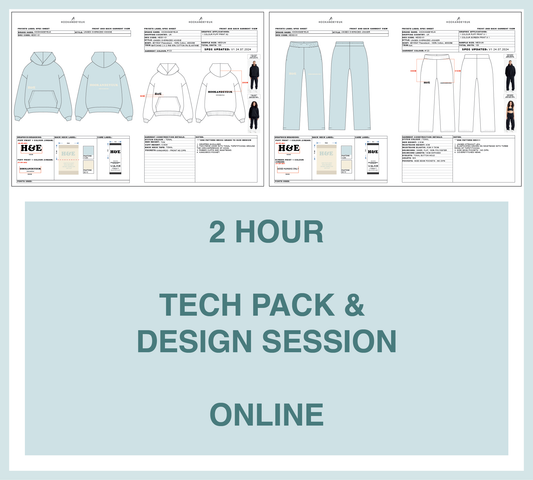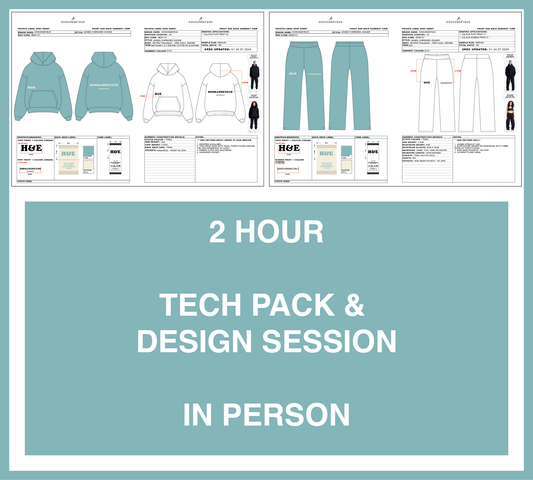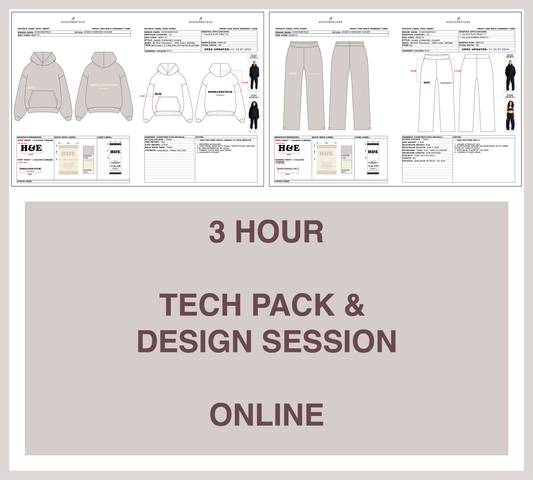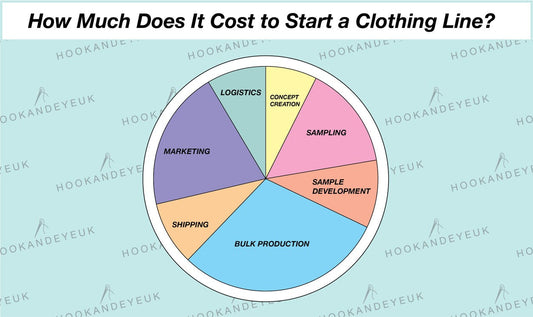Ultimate Guide: How to Define a Strong USP for Your Clothing Brand
Every clothing brand needs its own USP (Unique Selling Point). It’s essentially what makes your brand stand out, and the reason why people should buy your garments! Below we discuss how to find yours.
Let’s be honest, the clothing market is saturated. It’s competitive and can be tough for a newborn brand to make themselves heard. But don’t be discouraged! It all boils down to WHAT you do as a brand, and HOW you show people that (i.e, marketing).
Every brand needs something consistent across all designs that solidifies the design aesthetic and gives customers a reason to be their go-to brand for that product or look. It’s a huge part of your brand identity. For example, if we think of Palm Angels we think of boxy fit t-shirts with large prints, when we think of Stussy we think of graphic hoodies, when we think of the Fear of God Essentials range we see earth tone tracksuits with minimal branding. Every brand needs its own style and USP.

Your USP will become central to your brand and everything associated with it so it needs to be something with longevity that you (and your customers) aren’t going to get bored with.
Read below for our top 4 steps to discovering your USP!
Step 1: Identify Your Target Market & Set the Right Price Point (RRP)
What do you want your future customers to come to you for? Think about who you see buying your product and thus what appeals to them. Consider age demographic, lifestyle, buying power (what they will spend!). Remember that customers heavily connect the recommended retail price (RRP) to the quality of an item. 'Affordable Luxury' is a term we hear a lot these days but it makes very little sense as higher RRP's are heavily linked to the feeling of luxury. You know yourself if something is low in price then you will question if it will be any good!
Step 2: Analyse Competitors to Spot Market Gaps & Opportunities
How do brands that you see yourself sitting alongside position themselves in the market? What do they do well? Have a think about the brands you like and what you go to them for. See the examples below from Skims, Levi's and Lululemon. Each have built their brand on a foundation of picking a certain product category and honing it.

Step 3: Define a Clear USP & Integrate It Into Your Design Process
What are the unique aspects of your designs, what gap does it fill in your customer’s lives? Your USP can be based around a product (e.g bold graphic tracksuits or simplistic, quality essentials), a service (maybe it’s an underwear brand that operates on a subscription basis), a purpose (tops that accommodate breastfeeding), a lifestyle (think Vans skate culture or Patagonia’s outdoor lifestyle), or a value (only delivering high quality made to last garments, using eco-friendly materials, giving back to the community - donating to charity).

Our advice, keep it simple.
You know that saying, ‘jack of all trades, master of none’? Sometimes it’s better to zone in on one particular thing, and do it really, really well, rather than covering a huge expanse of products and styles in the hope that it will appeal to everyone, and losing focus and brand cohesion in the process. Most successful big brands will have started small and gradually expanded their product categories as their reputation and customer base grew.
Your product doesn’t need to be all-singing, all-dancing either; don’t over complicate things; the best brands usually just have an interesting silhouette with an appealing colour palette and recognisable branding. Take a look at your own wardrobe and look at the pieces you buy. Most people don't like overcomplicated pieces, usually customers will opt for quality and the way the garments make them feel.
As Hook and Eye UK specialises in higher quality streetwear brands naturally most of the brands that come to us have a USP of high quality hoodies/joggers/t-shirts/sweatshirts etc with amazing fabrics, silhouettes and graphic applications.
Step 4: Use Your USP in Branding, Marketing & Customer Messaging
Feeling good in a garment isn't just about the fabric it's also about the general marketing, imagery and messaging from the brand.
Last year, someone gifted me a cardigan from a very low-value high-street brand. Whilst the thought was very much appreciated, I can’t bring myself to wear it. The cardigan design itself is ok, but I don’t like the brand. I don’t like their ethics, their reputation, and I don’t want to be seen associating myself with them.
By contrast, when I’m wearing something from a brand that is ethical in its supply chain, has good quality product and positive ‘I want to be a part of it’ marketing and social media, I feel proud to wear it and in a small way feel a part of that brand ‘family’.
Clothing carries vibes – make sure yours are positive! Your USP should be something that becomes the foundation of your company culture and brand messaging.
Take a look at the brand Pangaia. They use fairly simplistic shapes and designs combined with their USP of material innovation and being environmentally conscious – they weave this messaging throughout everything they do.

The final step is to market your brand well, get your message across. Our top tip would be to invest in marketing and photography that aligns with your vision and shows it to its full advantage. Always remember that your designs need to be supported by quality imagery and messaging to complete the brand feel. It’s not enough to have a great product in a competitive market, you have to engage people, show them what this product can do for them and make them want it. Your website and social media content is crucial for this.
Conclusion: Why a Strong USP is Essential for Your Clothing Brand’s Success
Discovering and defining your clothing brand's USP is a key part of forming your brand identity and will help you stand out.
Looking at brands you aspire to be akin to, what they do well and how they market themselves will help you find your niche and define your own USP.
Marketing is key - support your products with high quality photography and social media content that shows off what your brand does. Your USP should form the foundation of your brand image and be woven throughout everything you present to your customers.
If you'd like some help with defining your brand USP, as well as advice on brand level, concept and strategy, our brand consultation sessions offer just that! Head to our page here to find out more.
Love, Bethany H&E xx
P.s We're here for you if you have questions head to our contact page here.

About the Author: Bethany is an experienced fashion designer at Hook and Eye UK, with a First-Class BA (Hons) degree in Fashion from the University of Northampton. She is the recipient of both the Fashanne East Midlands Design Award and the CORDURA Durable Design Award, recognising excellence in design and durability. Bethany began her career as a Design Assistant within the uniform industry, contributing to ranges for major brands including HSBC, EasyJet and Costa Coffee. She later worked as an Accessories Designer, creating licensed products for leading UK retailers such as Next, M&S and New Look. She joined Hook and Eye UK in November 2023.









